Setting goals is crucial for both personal growth and the success of a company. However, merely setting a goal without a clear plan is a recipe for failure. This is where OKR (Objectives and Key Results) come into play!
And there's a road I have to follow
A place I have to go
Well, no one told me just how to get there
But when I get there I'll know
'Cause I'm taking it
Step by step
Bit by bit
Stone by stone (yeah)
Who knew that Whitney Houston’s captivating love lyrics actually also describe the foundation of OKR!? Let us explain.
What are OKRs?
In simple terms, OKR represents a goal-setting framework guiding individuals and companies to achieve their Objectives through Key Results. OKR should be measurable, enabling you to track progress, evaluate performance, and assess goal achievement.
In the example below, you'll see a well-structured OKR with measurable Key Results. Take note of the numbers, showcasing the effectiveness of this approach.
Objective: Achieve 1 Million Followers on Instagram within 6 Months
Key Result 1: Content Strategy and Consistency
- Develop and execute a comprehensive content strategy that includes posting high-quality content at least twice a day.
- Maintain a consistent posting schedule and achieve a total of 360 posts over the 6-month period.
Key Result 2: Collaborations and Partnerships
- Collaborate with 10 influencers or brands in the same niche for shoutouts, cross-promotion, or joint content creation.
- Secure partnerships with at least 3 major brands for sponsored posts to increase visibility and attract followers.
Key Result 3: Paid Advertising and Follower Acquisition
- Allocate a budget for targeted advertising campaigns, aiming to reach a total of 600,000 users.
- Gain a minimum of 300,000 new followers through paid advertising efforts.
FAQs on OKR:
How many objectives should I have?
This depends on the size and complexity of your organization and what role you have. But a common guideline is to have 3-5 high-level Objectives per quarter.
How many Key Results should I have?
It’s recommended to have around 3-5 Key Results per Objective. Each Key Result should have a title and 2-3 bullet points with the measurable tasks.
How often should I set my OKR?
There is no right or wrong answer to this but the most common time frame for setting and evaluating your OKR is once per quarter. This gives enough time for tracking progress, making adjustments, and aligning efforts - and allows for a balance between short-term focus and long-term planning.
How often should I have OKR check-ins?
The frequency of OKR check-ins should be determined based on your specific situation and the preferences of your manager and team. However, starting with a weekly check-in and adjusting if needed can be a good approach.
Where should I store my OKR?
The most important aspect when storing your OKRs is to ensure that they are stored on a platform that allows for visibility and transparency across the organization. This promotes alignment, accountability, and collaboration among teams. Regularly updating and communicating progress is also crucial to keep everyone informed and engaged in achieving the OKRs.
A platform like Mentimeter is an excellent choice for this purpose. With your team, you can brainstorm and set the OKRs, ensuring a focus on the most relevant ones. By utilizing the 'Open Ended Questions' feature, the team can anonymously contribute their thoughts and opinions on what the Objectives should be.
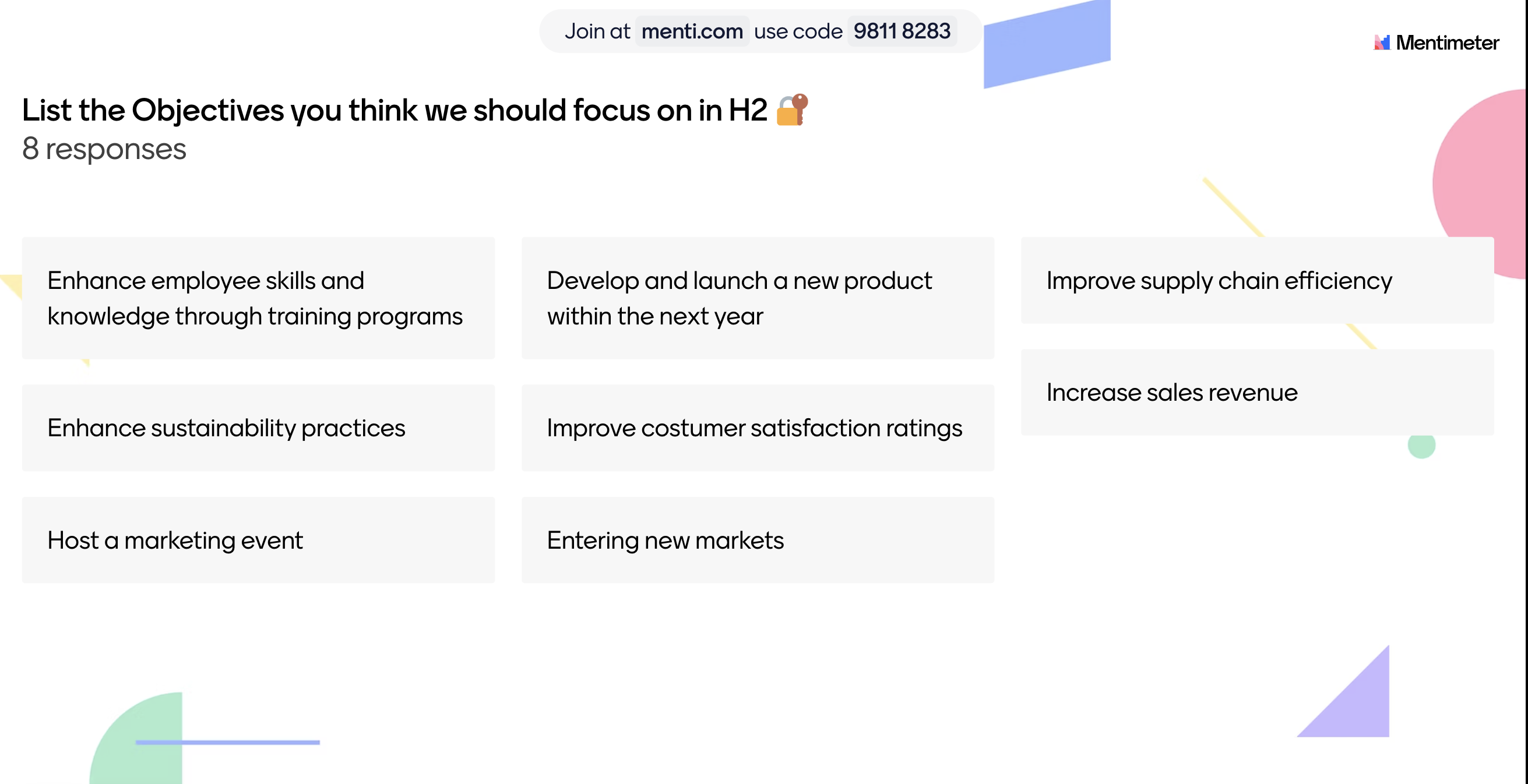
Enabling the 'voting on responses' feature allows the team to vote on the Objectives they believe should be prioritized for the upcoming quarter. This approach makes OKR setting both enjoyable and collaborative! (You can follow the same process for Key Results as well.)
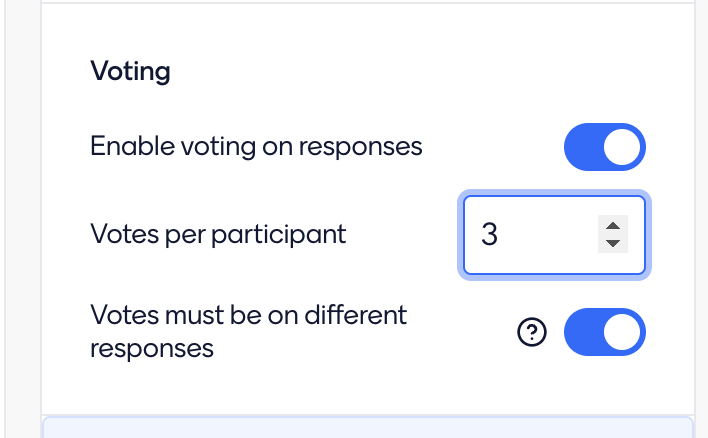
After the OKRs are set, your team can store them in a Menti presentation. Storing them in a presentation facilitates regular follow-ups with your manager and provides a clear overview of your progress.
Most importantly, you can easily share the presentation and make it accessible to other Menti users. Remember, transparency is key! Read more on how to share your presentation here.
Check out this Mentimeter template to store OKRs and have check-ins (simply update ‘KPI’ to ‘OKR’ in the template).
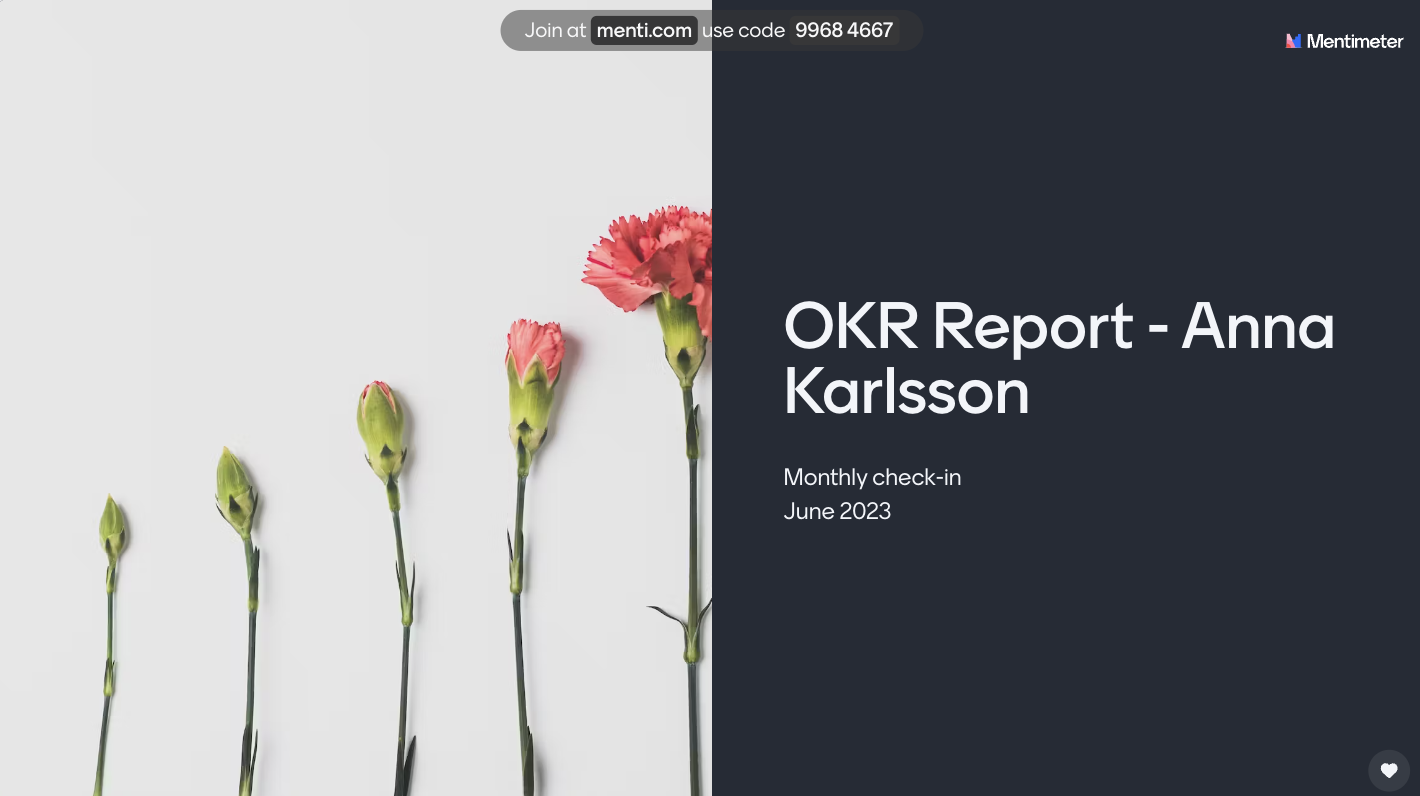
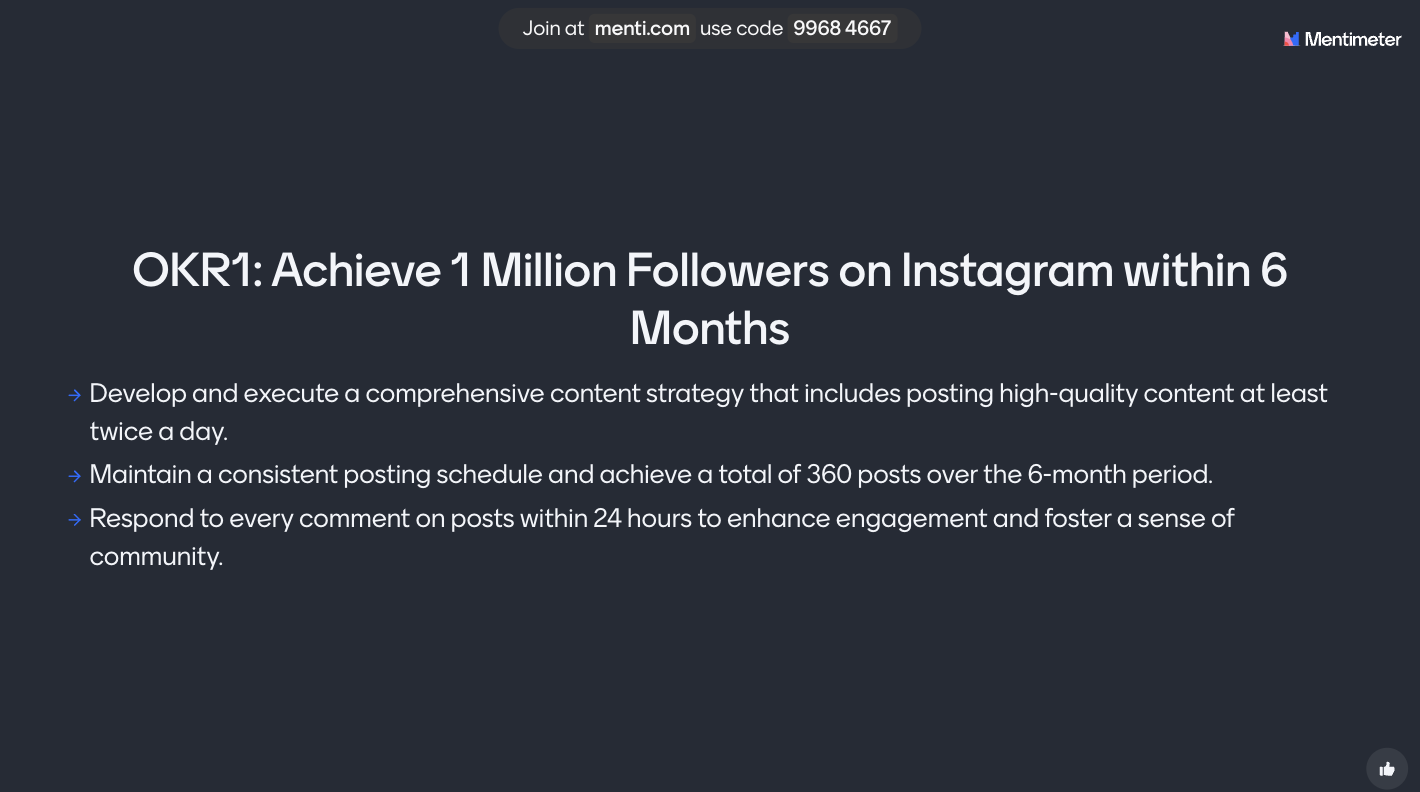
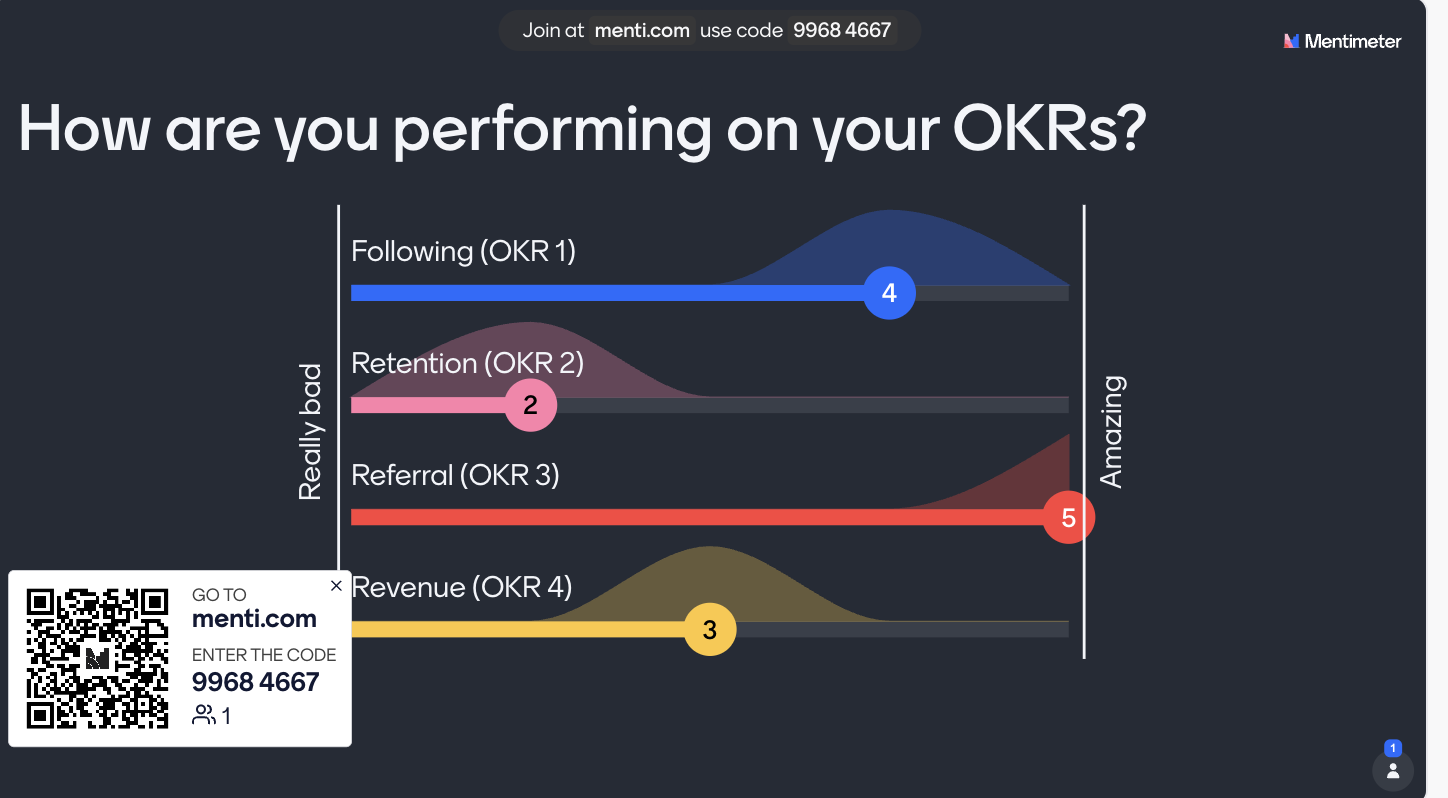
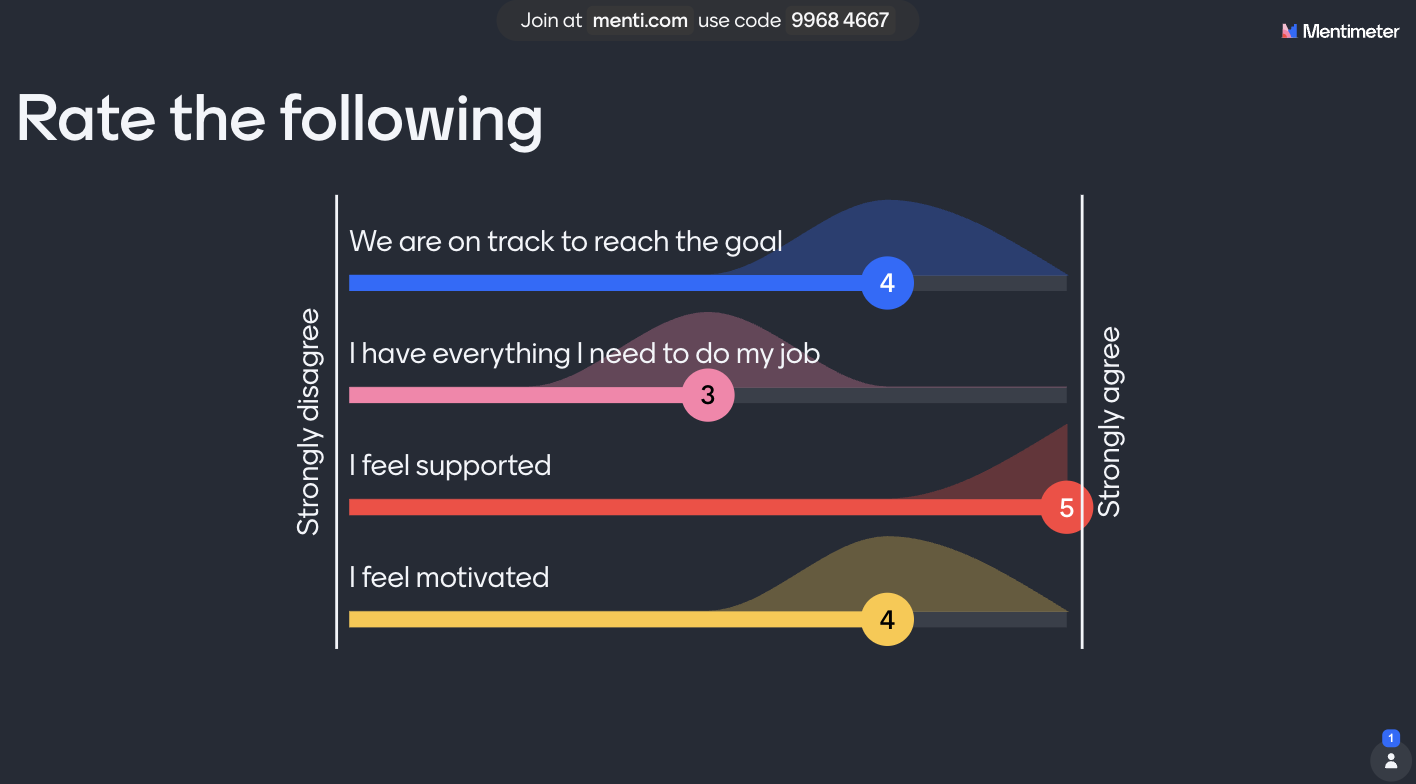
Advice from an OKR expert!
We reached out to 'the OKR Coach,' Daniel Mälsjö, who supports companies and individuals with their Objectives and Key Results on a daily basis. With an extensive track record in OKR implementations, there’s no one better to get some tips and tricks on the subject.
Hi Daniel! Could you give an example where you have been involved in creating success for a company or individual using OKRs?
Hi Mentimeter! A good example would be when I worked with a tech company in an expanding industry characterized by a fast pace, numerous initiatives, and highly engaged employees. By establishing OKRs as the method for strategy implementation, we created a clear focus, identified each team's contributions, and increased employee engagement.
The effect after 6 months was higher employee engagement with the company's strategy, clearer focus in the management team, improved collaboration between departments, and reduced stress among employees (as everyone knew where we were heading).
What challenges do you often notice when a company or an individual begins working with OKRs? Do you have any practical tips on how to avoid them?
There are a few common pitfalls when an organization wants to establish OKRs in their operations. The top 3 are:
- Having too many OKRs at once, leading to overload and lack of focus. Focus on 2-3 strategically important OKRs per team.
- Creating vague OKRs, often being more output-focused than outcome-focused. Ensure that your Key Results are the effects you want to achieve, not activities.
- Poor follow-up, where OKRs are set but not followed up or followed up infrequently. Establish a routine of weekly OKR check-ins to track progress and celebrate victories.
Lastly, what is the most enjoyable aspect of working with OKRs, and why do you think everyone should learn this method?
The power experienced when an organization's ambition and passion are complemented by focus, measurability, and progress is exhilarating. Additionally, I love the continuous improvement that OKRs promote. By constantly evaluating and adapting the method to fit the organization, the implementation becomes a learning journey in itself. It's like being part of a constantly advancing adventure. Furthermore, I enjoy the opportunity to challenge individuals and help them take steps they didn't think were possible!



